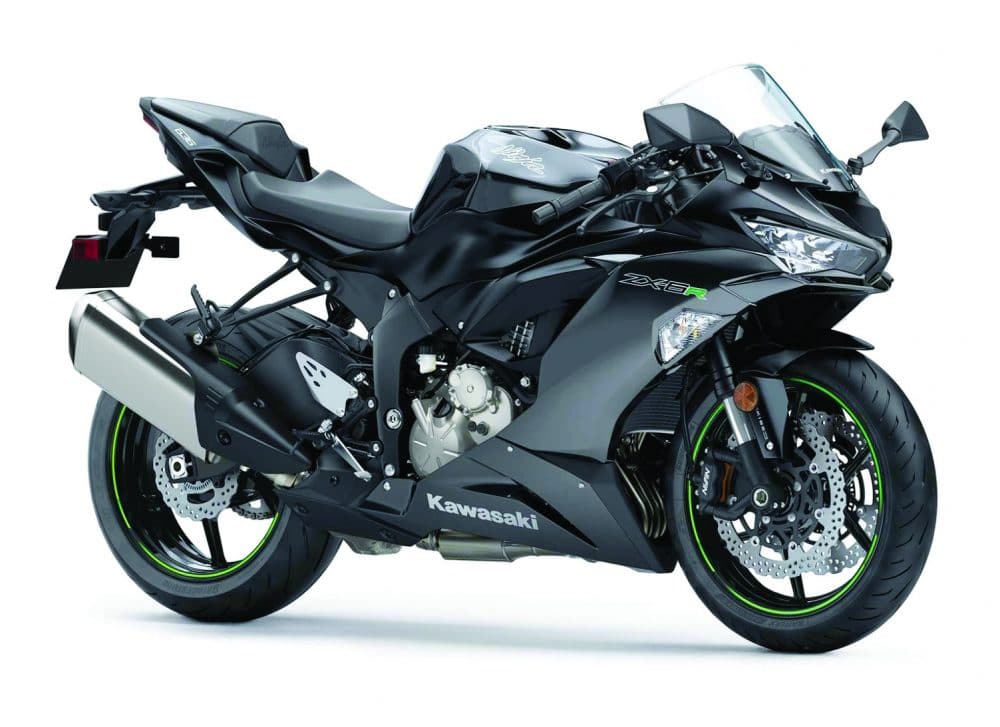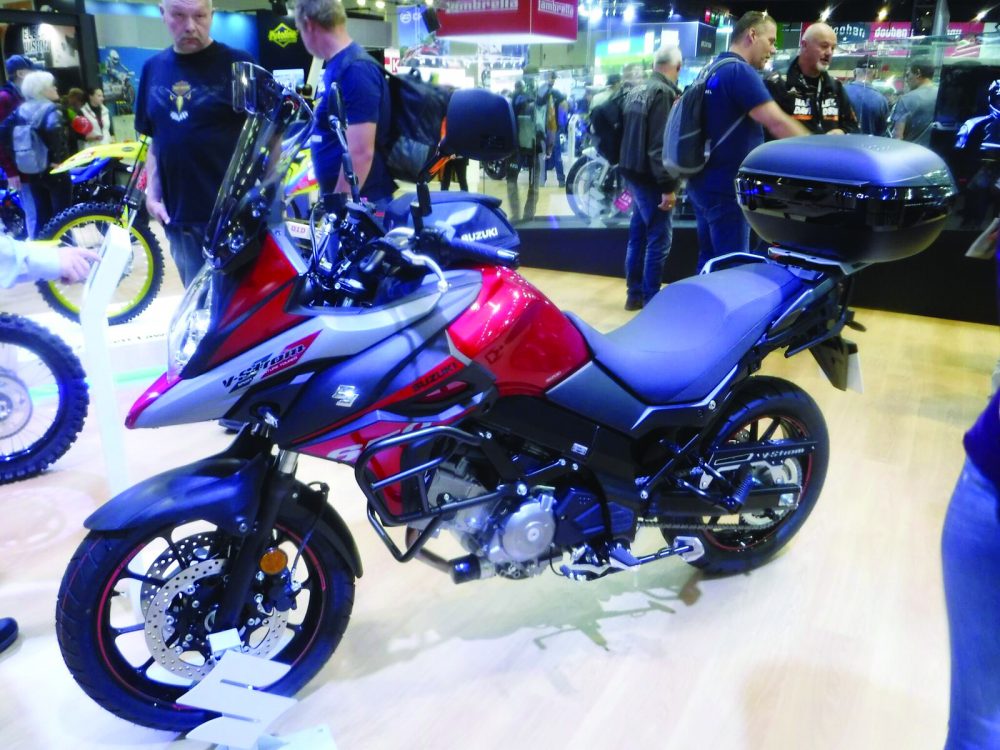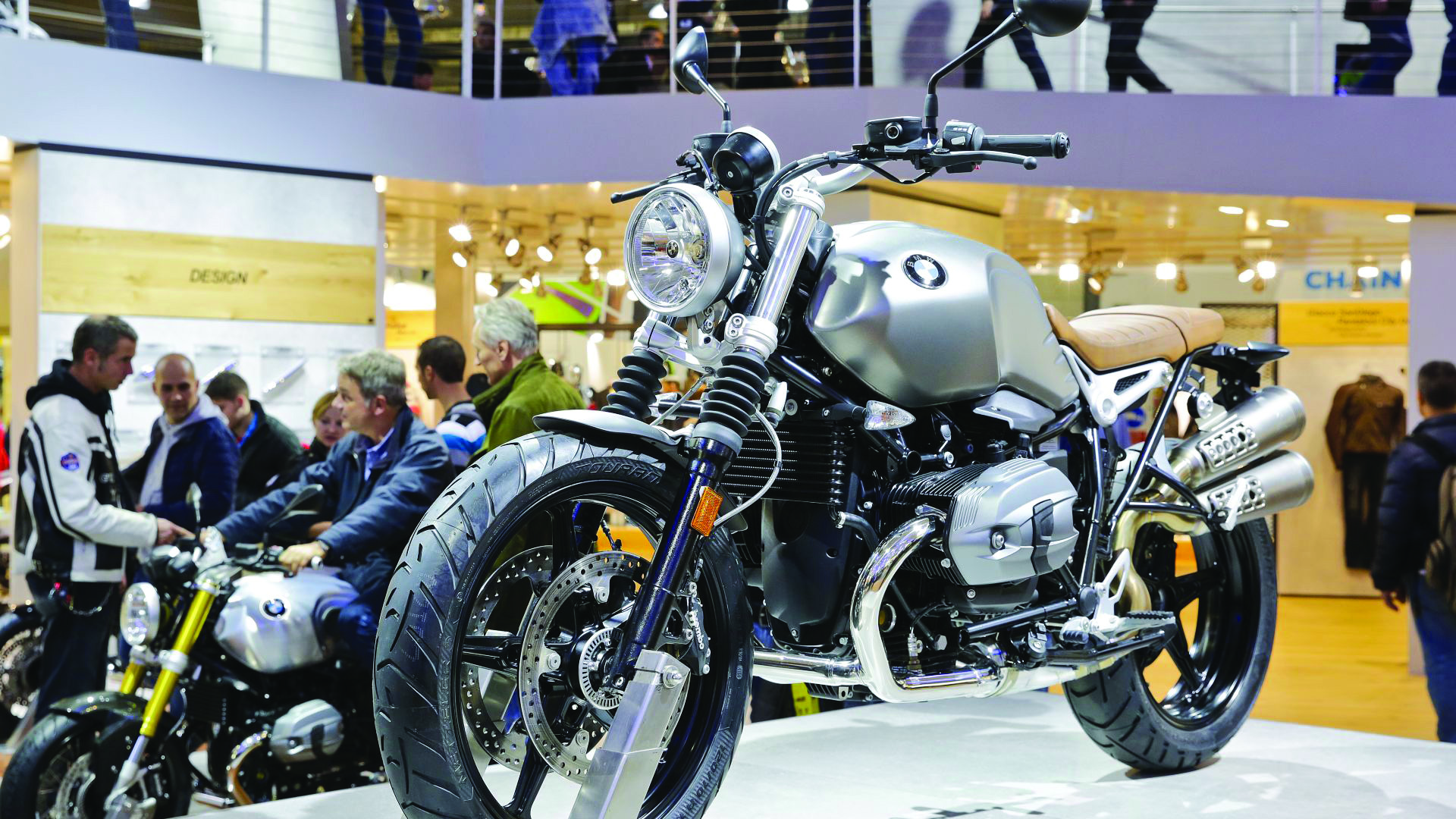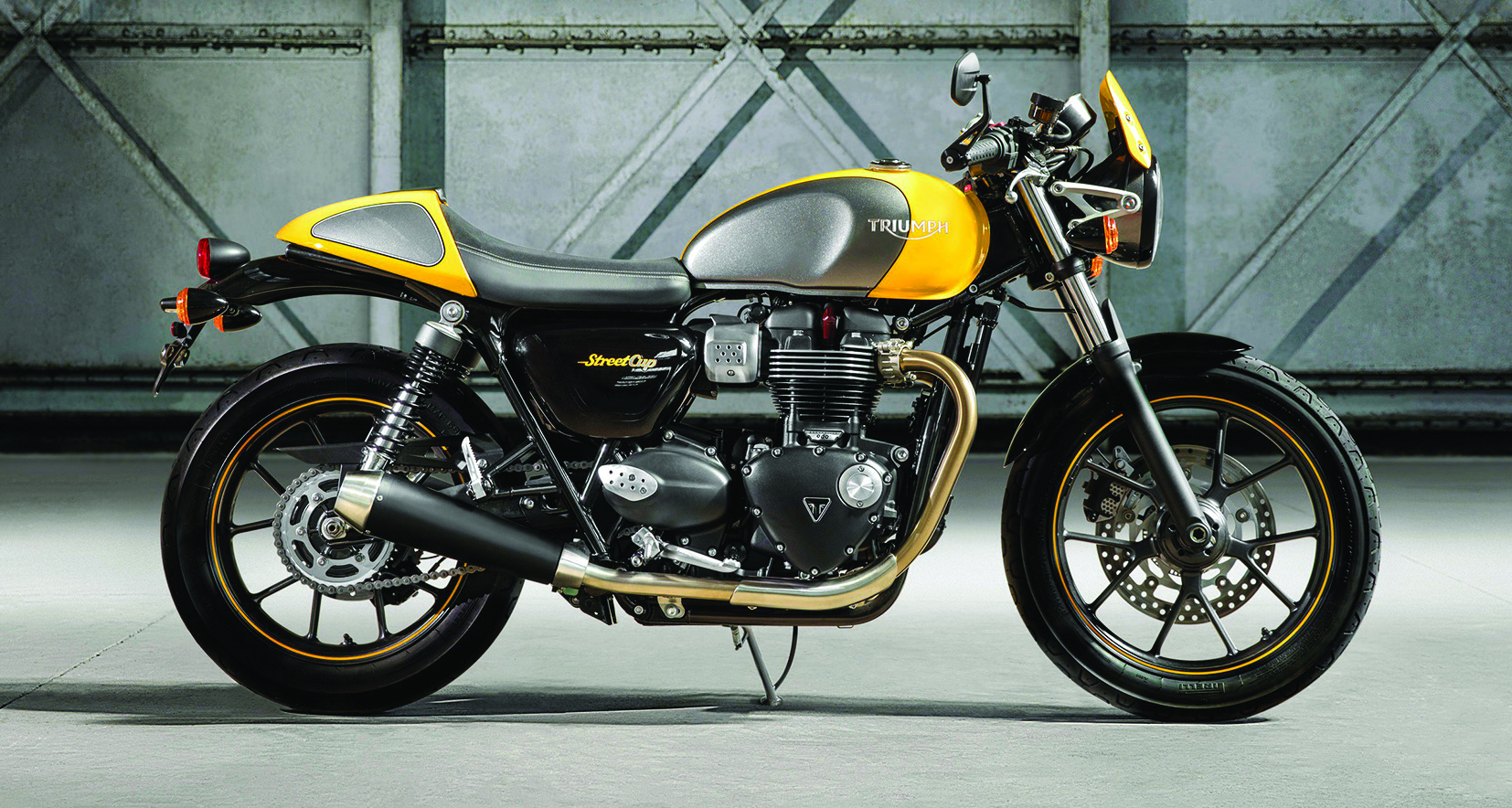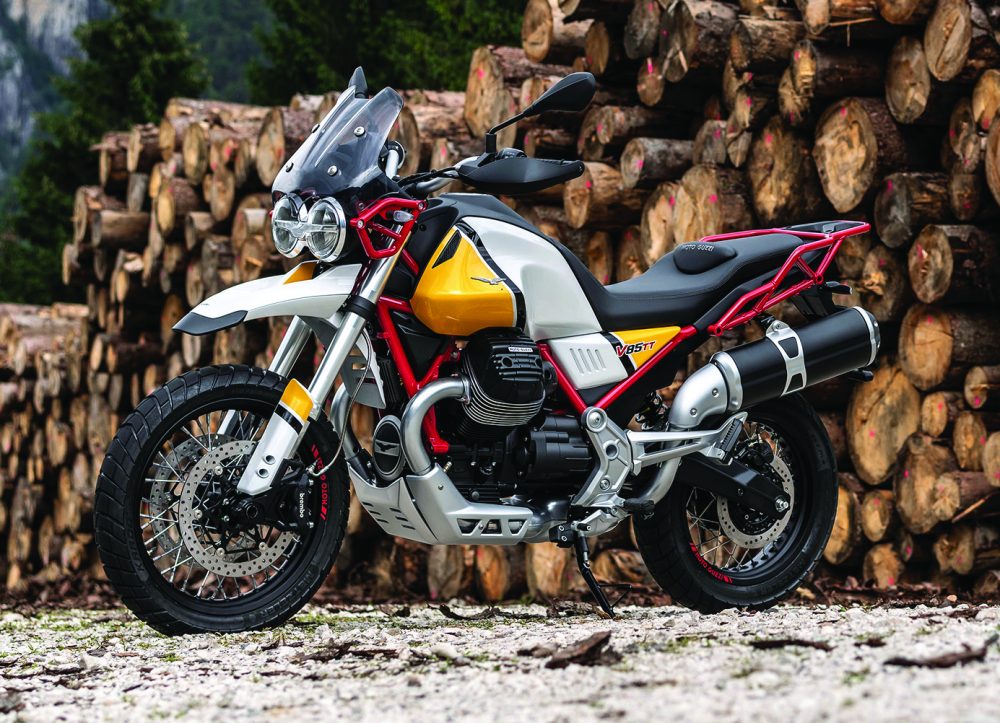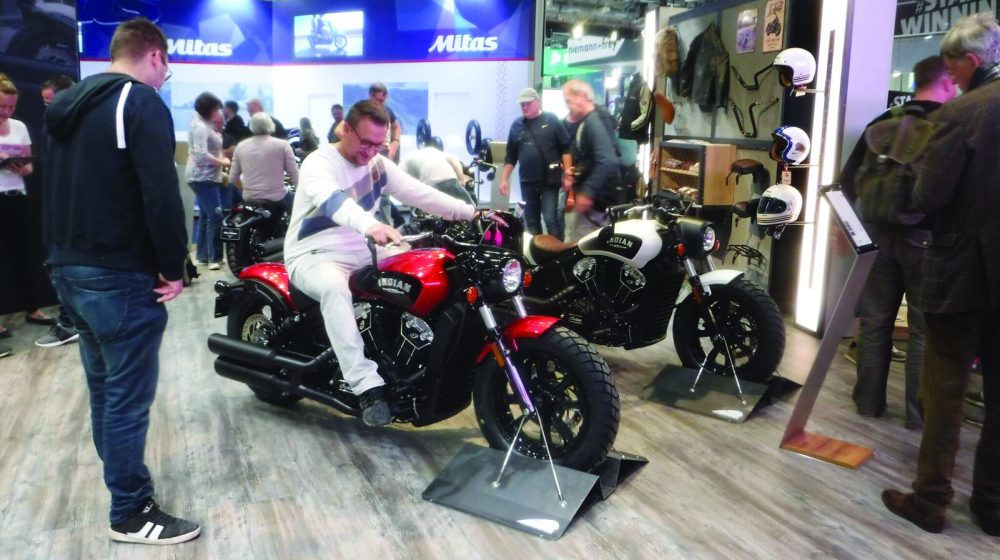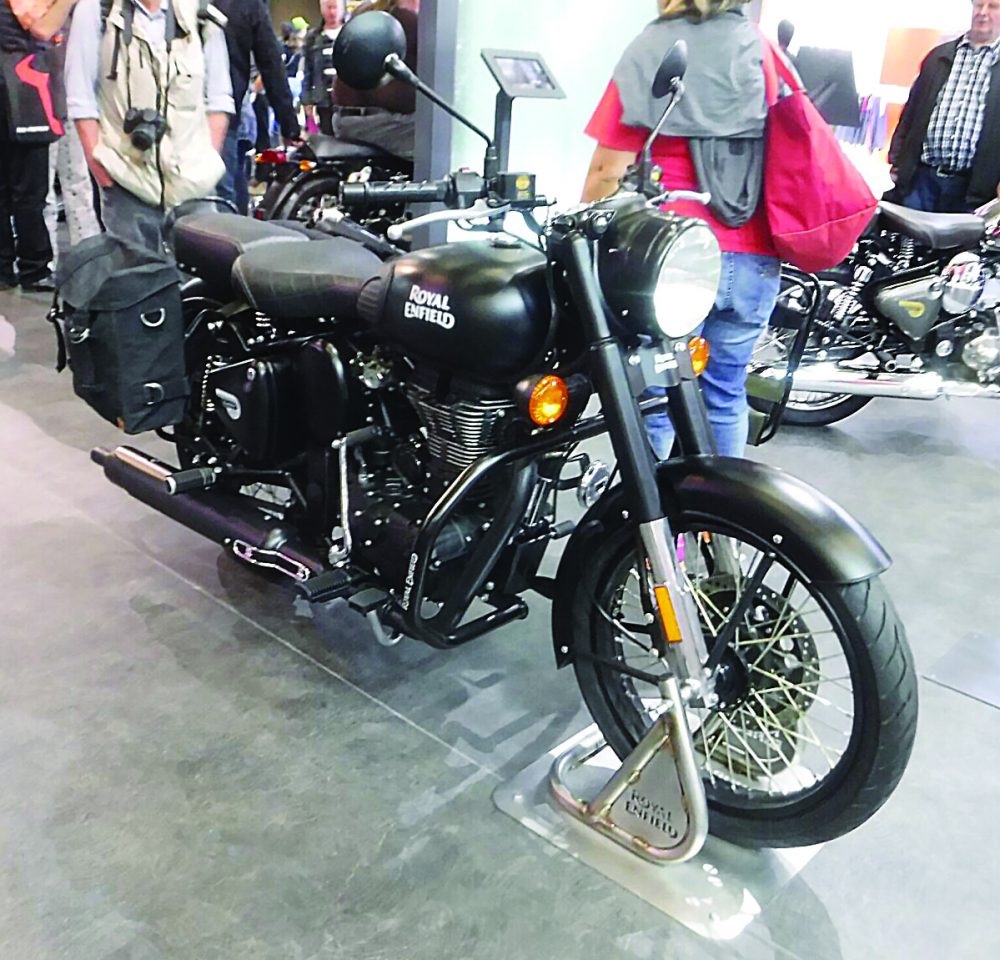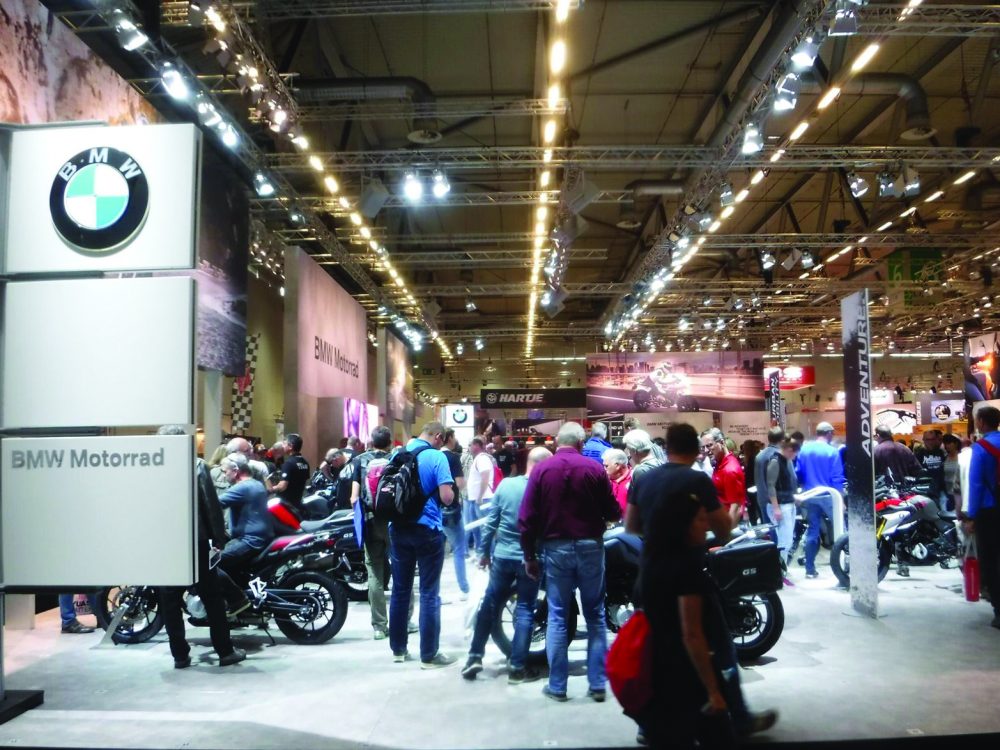Continuing Nick Tasker’s review of the Motorcycle Live event held last November at the NEC…
Ducati
We had all the big reveals last year so, for 2018, the Italian firm have tried to make as big a deal as possible about mid-cycle refreshes to their existing models. Their hilariously silly Diavel cruiser and monstrously oversized Multistrada Enduro got the new 1260cc DVT engine, resulting in smoother running and a more civilised low-speed response. The Multistrada 950 is joined by an ’S’ model, with electronic suspension and a few other goodies, raising both the price and a number of questions.
The attraction of the smaller-capacity Multistrada for me was that it was a simpler, cheaper bike for real-world riding where the bigger brother was more of a car-priced technical showcase. So how many people really want the toys from the bigger bike, yet shun the extra power, given that the weight and seat height figures are so similar? If you wanted something much lighter you could always treat yourself to the new Hypermotard, which now sports the smaller Multistrada’s engine and restyled bodywork, but loses any semblance of practicality. I bet it’s utterly hilarious to ride.
A lot of people have been expecting a new Streetfighter with the V4 powerplant, but instead we were given the Panigale V4R. Available with either 221bhp or 234bhp with the optional Akrapovic exhaust system and featuring winglets on the front fairing to keep the even-lighter bike on the road, I’m honestly not sure what to say. I haven’t ridden the previous V4, but I’m told that it’s terrifying and exhausting in equal measure. I’m not sure how increasing horsepower by 15% is going to help things in that regard.
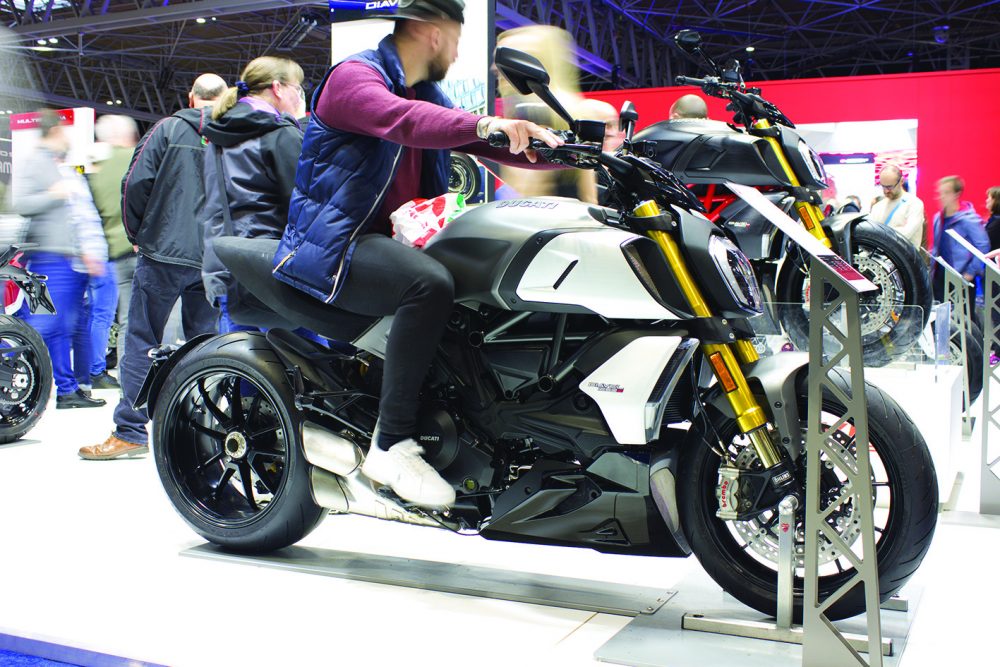
Ducati Diaval 1260S
Triumph
Triumph are increasingly fond of announcing their new bikes at dedicated events throughout the year rather than saving them up for show season and those shopping at their local dealer next year have a breadth of updated models to choose from. The Street Twin is now quite a bit more powerful, making it an interesting choice for solo retro motoring rather than simply a castrated, beginners-only Bonneville. The Bobber has spawned so many new variants that I’ve lost track, although the more practical Speedmaster version does stand out. Even so, someone should tell Triumph that adding a pillion seat only helps matters if said seat is large enough for an actual human backside.
The T120’s have gained a couple of rather pretty special editions to celebrate the 60th anniversary of the original Bonneville for 2019, but they’re entirely styling exercises with no real changes. The only genuinely new model was the Scrambler 1200, a bike that the company claims has genuine off-road capability when compared to the more style-oriented alternatives on the market. The inclusion of a bluetooth-connected dash with GPS functionality leads me to suspect that we’re actually seeing the genesis of the retro adventure bike. Big and powerful enough to haul you and your luggage across the country and with just enough off-road capability to handle the gravel road to the campsite. It would solve the one problem that even those of us who like, and ride, adventure bikes generally agree on – they’re all pretty ugly motorcycles.
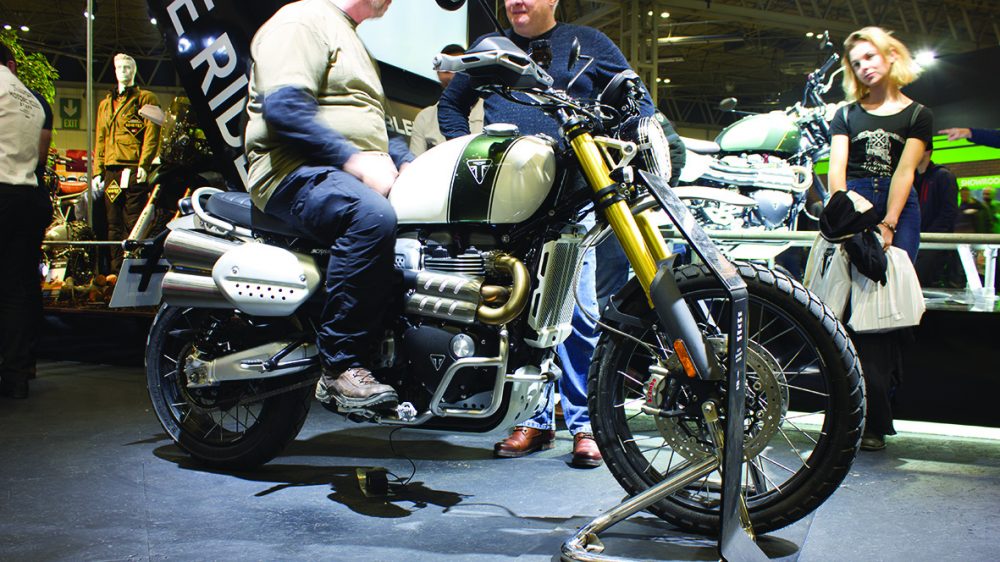
Triumph Scrambler 1200
Moto Guzzi
Speaking of retro adventure bikes, that’s possibly what Moto Guzzi is pinning its future on. The V9’s continue to be ignored in favour of the cheaper and more entertaining V7s, but at least the styling department has recognised this and is churning out new variants faster than even Harley-Davidson can manage. With their older 1200cc-engined bikes all killed off by Euro 4, Moto Guzzi would surely have folded were they not sustained by owners Piaggio. I bet an awful lot of jobs depend on the success of the new V85TT, and so they’re keeping their cards close to their chest with no solid details available.
It’s interesting that the bike was showcased with Metzeler Tourance tyres rather than some semi-knobbly treads, suggesting that the Italians are very aware that this is going to be a road bike rather than something aimed at serious off-roaders. All the other boxes are checked – metal panniers, raised mudguard, spoked wheels – so it remains to be seen whether a charismatic but overweight and underpowered air-cooled engine can compete in a world where even Triumph’s classic bikes sport secretly modern, powerful liquid-cooled engines.
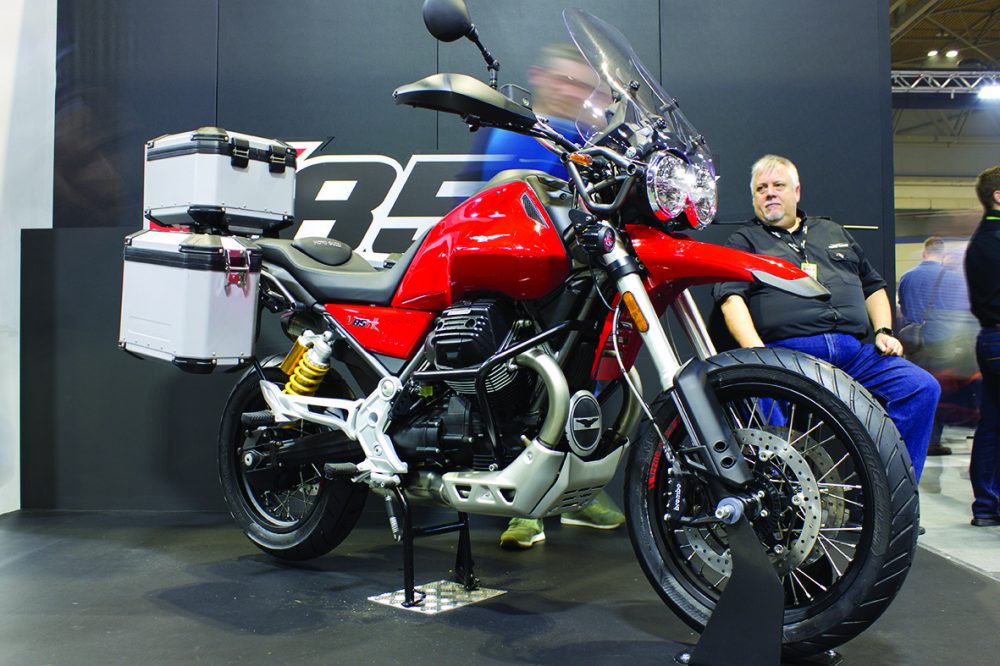
Moto Guzzi V85TT
Honda
I feel that Honda have been on a roll lately. None of their models have shattered segments or set sales charts alight, but every single one of their models seems to be really rather good. Traditionally one of the more conservative manufacturers, and frequently late to the party on any new trend or fad, they’ve been showing and then releasing some interesting new interpretations of their old staples lately.
Their CBR650F has morphed into the upgraded CBR650R, with more power, less weight, upside-down forks, radial four-piston brakes, lower clip-ons, an all-new fairing with LED lighting styled on the new Fireblade, and a very cool LCD dashboard. Despite all this, you can still take one home for less than £8,000 and enjoy a genuinely usable road bike that doesn’t need revving to the stratosphere to pull away from the lights. For sporty riders, who mostly ride on the road and don’t need to win forum arguments with power figures, this could be a fantastic choice.
If you like the 650cc inline-four but prefer the style of the larger Neo-Café CB1000R, that combination will be available to order in 2019. Even A2 licence holders can get in on the fun with the CB300R. Going back up a capacity step, the three 500cc twins have had a styling revamp, and the X version even gains more ground clearance and a 19” front wheel to bring it more in line with other road-focused adventure bikes.
The only genuinely all-new bike for 2019 is the return of the legendary Super Cub. A glorious re-imagining of the original, it oozes quality and style and is a far more practical nostalgia trip than last year’s MSX-based Monkey. Complete with a semi-automatic gearbox, solo seat, luggage rack and even a fully-enclosed chain, this would be a brilliant way to get around town while making every other scooter look dull by comparison.
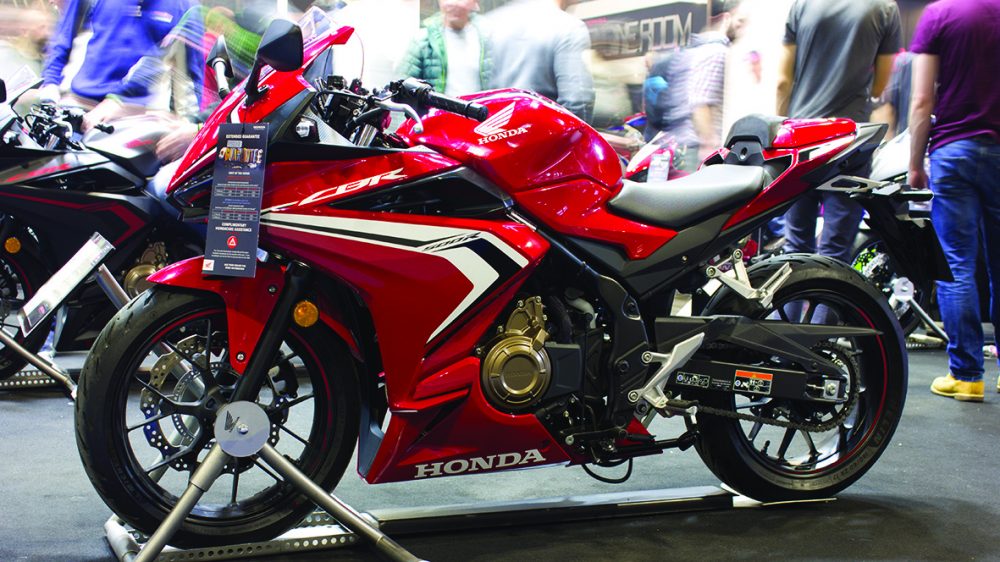
Honda CBR500R
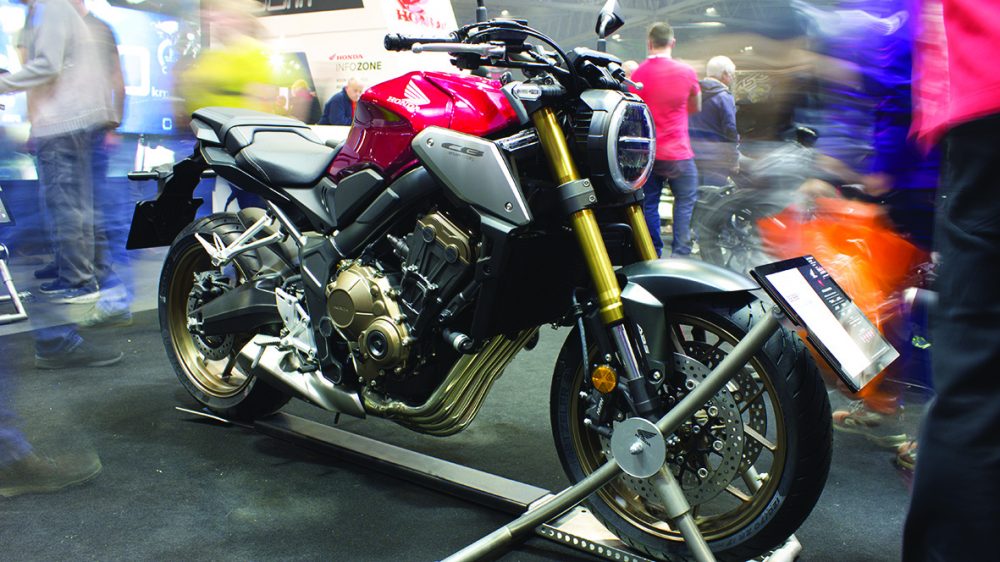
Honda CB650R
KTM
KTM have teased us with their 790cc twin-cylinder concept for years, finally delivering their new middleweight Duke last year. Riotously fun to ride, journalists and early adopters were nonetheless concerned with what seemed like a rather cheap, flimsy feel to many of the components. I’m concerned that this new platform may end up sharing the reputation for build quality that the Indian-made 125 and 390’s suffer from, which would be a real black mark against the new 790 Adventure.
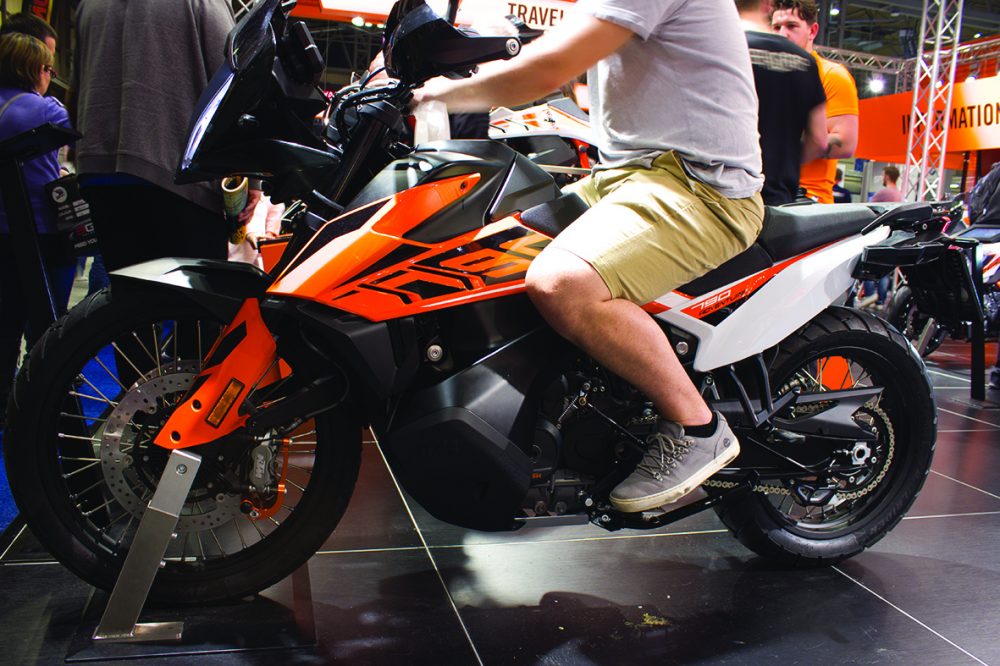
KTM 790 Adventure
Like its 1090 and 1290 stablemates, the smallest Adventure can be optioned in either base or R trim, depending on how much of your riding is likely to be away from tarmac. This, itself, raises the ongoing debate for our age, which is how much off-roading you can really do on a motorcycle that weighs more than 210kg wet. I daresay Lyndon Poskitt or the like could make any of the 800cc/210kg adventure-bike crowd positively fly, along even the very worst terrain, but he’d be far more likely to take something that weighed half that much for such an excursion.
KTM have a reputation for building genuinely capable faux-roaders, and the 21/18” wheel combos on offer along with the novelty engine-hugging fuel tank means the 790 adventure certainly has the right ingredients. The R model comes with an extra 2” of ground clearance and all the electronic gadgets that are expected these days and, of course, there are plenty of accessories available for those looking to spend even more.
Everyone Else…
Shall we start with Watsonian-Squire? You might have missed them at previous shows but they were always there, usually as part of the small Royal Enfield stand with a Bullet 500 clamped to one of their sidecars. Things must be looking up, as their marketing department found the budget for a much larger dedicated stand. Personal favourites were the bright-orange Vespa GT200 and the previous-generation Triumph Bonneville, both with beautifully matching sidecars. I’m not sure they work in the UK as anything but a novelty and, without proper fork conversions, they will be absolutely pigs to steer, but I want one all the same.
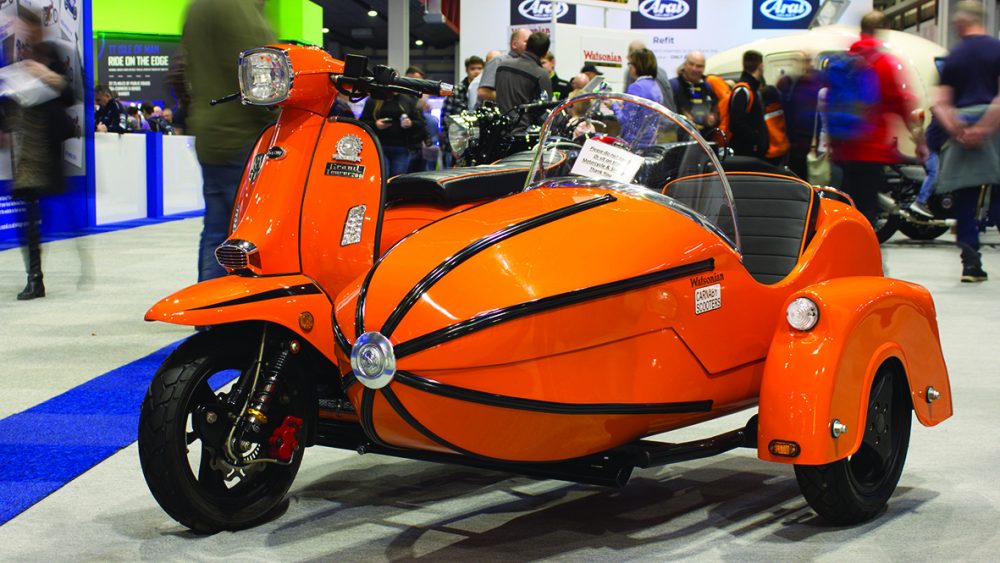
Watsonian Squire Vespa
Kymco were there as usual, their stand growing in strength and stature each year as their market share in mainland Europe continues to expand. This time they were showing off a beautiful 55th anniversary edition of their AK550 max-scooter. What? You didn’t know that Taiwanese Kymco have been making motorcycles since 1963? Or that they make a pretty cool swingarm-equipped sport-scooter that’s a bit like a cheaper, better-specced Yamaha T-Max? We don’t really buy scooters here in the UK, possibly because there seems to be a hard divide between those who commute into and around big cities and those that ride for pleasure. That doesn’t seem to be stopping Kymco from trying though.
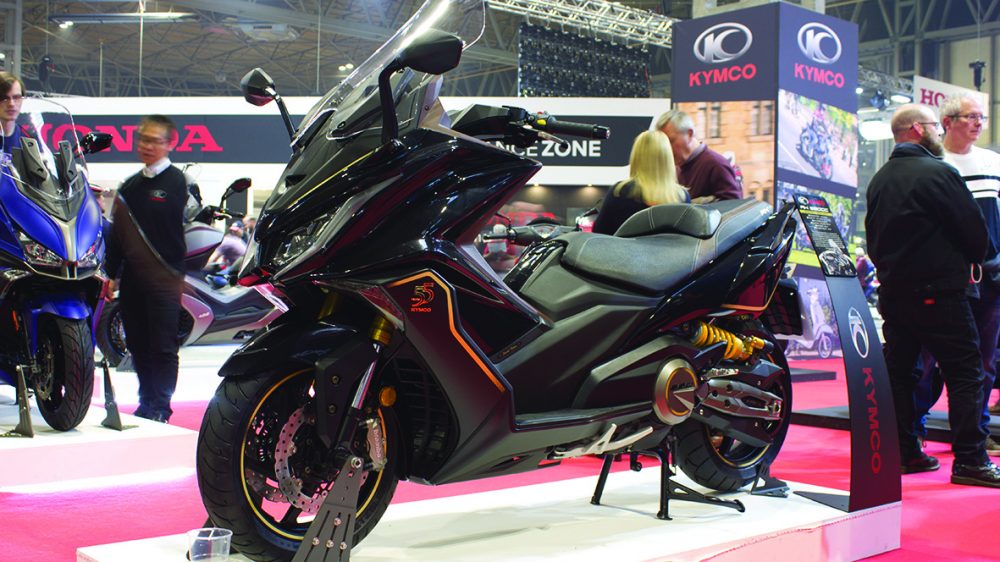
Kymco AK550 55th Anniversary Edition
Indian trotted out a tweaked and varied range of Scouts (small, 1200cc water-cooled cruisers) and Chieftains (enormous air-cooled cruisers), but also announced their intention to be taken seriously by the rest of the motorcycling world by showing off their new FTR1200 naked. Although lightweight and powerful compared to anything else in their lineup, 120bhp and 235kg wet could be a tough sell in what is an incredibly competitive segment. At £12k for the base model it’s outgunned by pretty much everything until you start looking at bikes with a third less capacity. I’m glad they’re branching out, but I’m going to need someone to explain to me exactly why I should walk past every other bike in the segment and choose one of these instead.
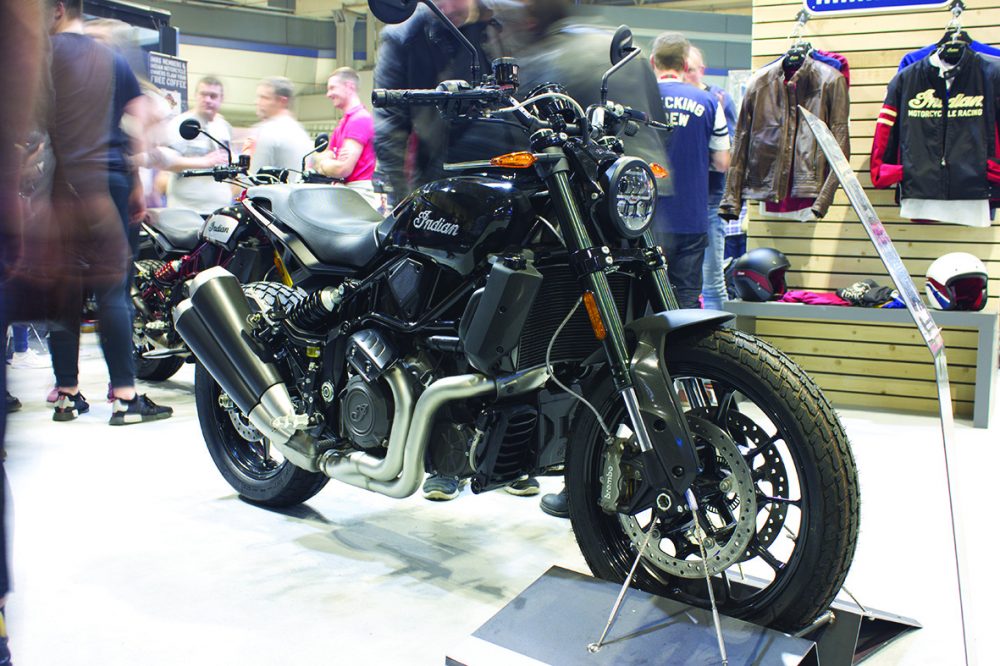
Indian FTR1200
Vespa had a rather reduced showing this year, normally showing up with enough scooters to seriously worry a cafe full of Rockers. More disappointingly was that their new electric scooter was up on a plinth with Do Not Touch signs stuck to it. It’ll probably disappear without a trace here in the UK, but this thing could be a game-changer in the likes of Milan or Rome. When everyone rides scooters to work, people default to Vespa. That means that until Vespa make an electric scooter, you’re not even going to entertain the idea of buying one. The performance is about equivalent to a 50cc petrol scooter, maxing out at around 30mph, and range shouldn’t be an issue given the application. I’d certainly like to try one, but if my commute were that short, I’d probably just cycle…
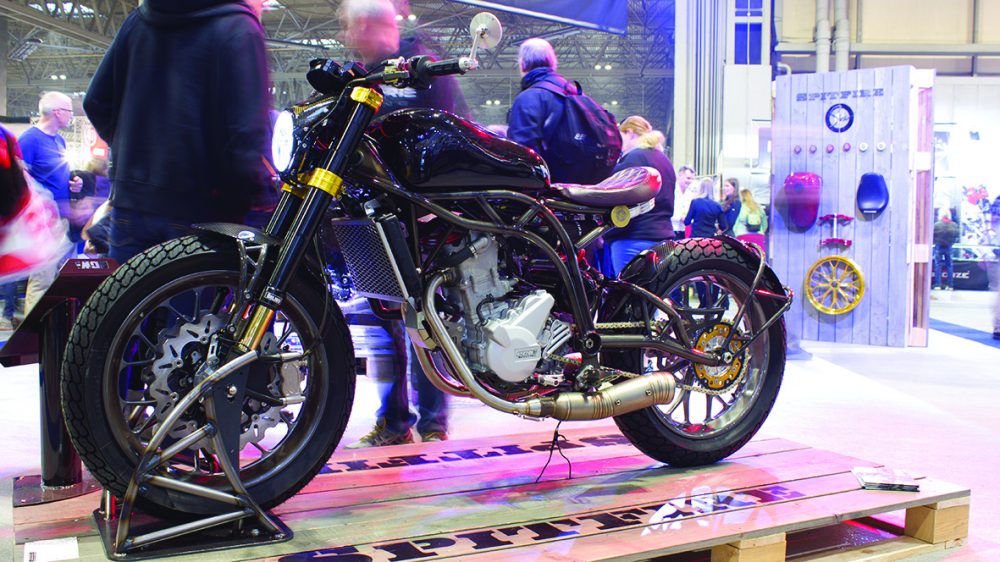
CCM Spitfire
I was genuinely worried that CCM were going out of business after their stands shrunk dramatically over the last couple of years. Their clever 450cc single-cylinder adventure/enduro bikes were great on paper, and were much loved by everyone who bought one. But the old Rotax engine couldn’t pass Euro 4, and so CCM had to go back to the drawing board. They made a couple of lightweight tube-frame roadsters, mostly as an internal experiment and now they can’t keep up with demand for variants thereof. Every bike at the stand was either sold out or taking pre-orders, each one customised according to its buyer’s preferences, and all of them hilariously light weight and beautifully made. With no plans to make more than 200-300 per model but with new variants each year it seems that the only way to get on the list is to take a chance and put down a deposit!
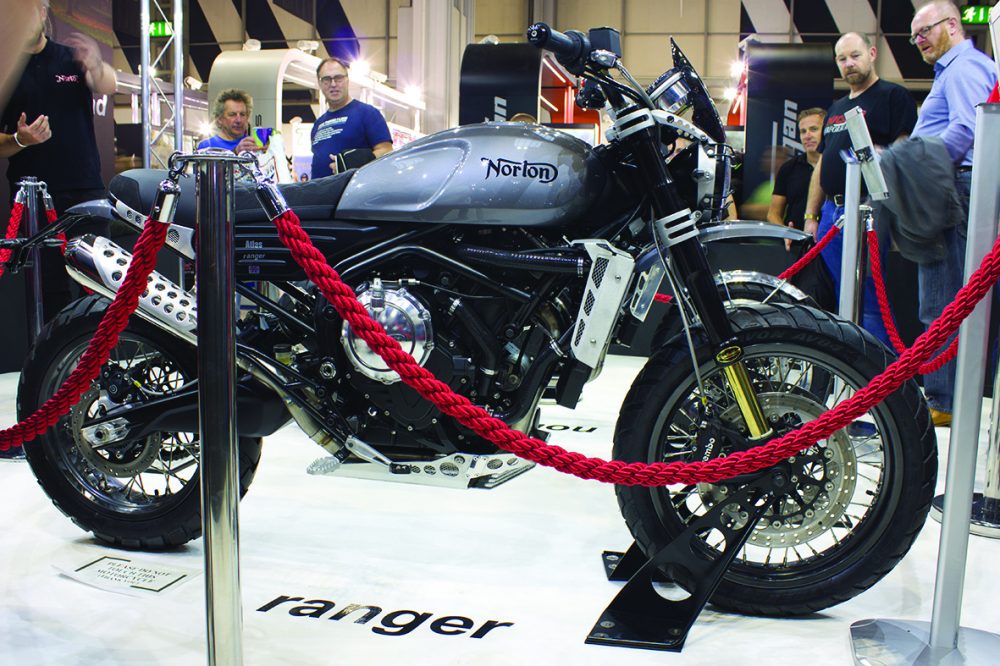
Norton Ranger
Norton have been parading their V4-based race bike for what seems like forever, but that also means that a lot of people will have missed the other carbon-fibre-faired race bike they debuted at Motorcycle Live. Effectively their V4 engine with the rear bank of cylinders chopped off and bored out to meet the 650cc class limit for the super twins race series, the nearly £20,000 bike is unlikely to sell in huge numbers. It is road-legal though, as required for homologation purposes and weighs around 180kg wet in that form, but race kits are available to shave several kilos off that number. The bike will also be available in presumably cheaper naked form, with a variety of concepts shown off at the show. Think of them like really upmarket Yamaha XSR700’s.
There were at least a dozen other players present – mostly Chinese makes that had acquired existing historical nameplates in an effort to buy credibility, such as Benelli and AJS. While the former would probably resent association with the latter, any Chinese manufacturer has an uphill struggle convincing British buyers that their bikes are a worthwhile investment. Lexmoto continue to fly the flag for recognisably Chinese imports, but I have inside information that suggests the build quality and after-sales support is still nowhere near minimum acceptable levels. Building trust takes time and I’m not sure that the meagre sales available in our car-dominated part of the world will ever really be worth the effort for companies used to selling millions of units a year back home.
Didn’t make it to the show this year and fancy doing some speculative shopping without being bothered by dealership sales staff? The London Motorcycle Show runs this coming weekend from the 15th-17th of February at the Excel Centre in London. See you there!
Nick Tasker
First published in Slipstream February 2019



